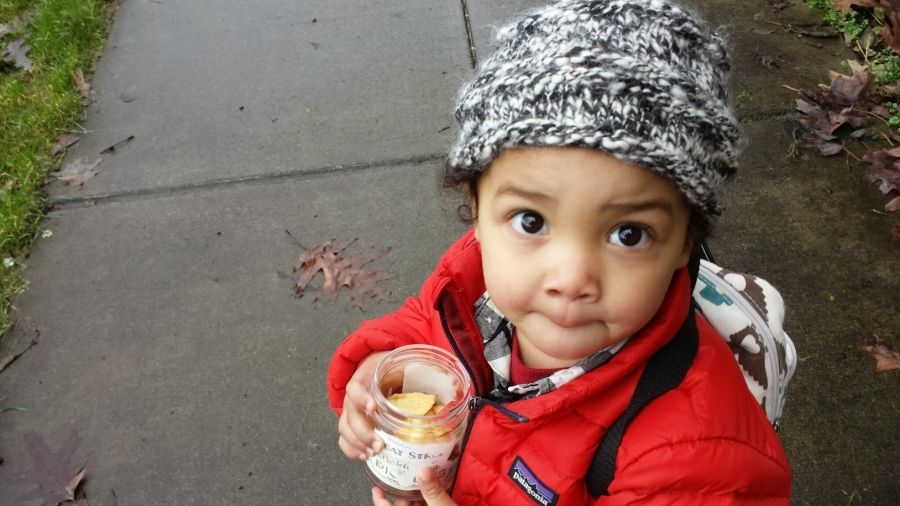
From engaging young children in STEM learning to promoting anti-bias literature for children, topics that engaged the Natural Start Alliance in 2015 were as varied as the members of the Alliance. We looked back across the year to see what most engaged our community across some of our digital platforms in 2015. Here are the highlights:
NaturalStart.org
The Natural Start site serves as the hub of communications for the Alliance, offering feature stories, resources, an Alliance map, and more. Here’s the most-viewed content of 2015:
STEM Learning: Our feature story on engaging children in STEM learning early remains a perennial favorite. Joshua Sneideman—an Albert Einstein Distinguished Educator Fellow at the Department of Energy's Office of Energy Efficiency and Renewable Energy—writes:
Experts in education, industry, and national security all agree that there is a national imperative to graduate students with a thorough understanding of science, technology, engineering, and mathematics (STEM.) In 2007, a Carnegie Foundation commission of distinguished researchers and public and private leaders concluded that the nation’s capacity to innovate and thrive in the modern workforce depends on a foundation of math and science learning. They conclude that a sustained, vibrant democracy is dependent upon this foundation in STEM.
But many parents and teachers wonder, at what age is it appropriate to start teaching STEM? And how can we implement these concepts into early childhood education? The answer is: It is never too early to start STEM education, and an ideal way to teach STEM is to go out into nature. Let me explain why.
It’s worth a read if you are one of the few who missed it.
Forest Schools in Public School: Another article originally published in 2014 remains a favorite, and it’s not surprising. Author Dr. Patti Bailie from the University of Maine-Farmington profiled a variety of ways that educators are incorporating forest school techniques into public schools in the US and Canada. She says:
With the rise of academics in early elementary grades, including kindergarten, many teachers and parents are longing for more nature in the classroom (or, more likely, outside the classroom). But are nature-based programs possible in public school settings? Several teachers who I met in the summer of 2013 while teaching a nature-based curriculum course at Antioch University New England have given me new hope that public schools can use the forest as a classroom.
She describes a Canadian school where children “spend their mornings outside in a woodland area or nearby beach and their afternoons back at school in the classroom.” She also profiles a Vermont teacher who implemented a “Forest Fridays” curriculum, and another who started “Science Hike Mondays.”
If you haven’t seen it yet, you should check it out. You’ll be inspired by how teachers have found innovative ways to bring nature into their curriculum, no matter their setting.
Nature-Based Preschool Conference: Started at the Chippewa Nature Center in 2011 with a core group of dedicated educators, the Nature-Based Preschool National Conference has grown steadily since then. The conference now attracts educators from across the US and internationally, and brings the field together in a unique professional gathering. And it’s now also one of the most visited areas of the Natural Start Alliance site.
If you haven’t checked it out recently, you’ll see that this month the call for presenters was issued. Proposals are due February 29th. Check out the conference site, and make your plans to join us in August at the Dodge Nature Center in Minnesota.
With social media, it’s easy to see what engages people. And in 2015, the Natural Start posts that most engaged you were:
Wonder and Excitement: With words by Rachel Carson illustrations by Zen Pencils, this post sailed across the internet, spreading wonder and excitement about nature for children.
Outdoor Preschools: Our community loved this National Journal article about the spread of nature-based preschools. It didn’t hurt that it included a fantastic, sharable video.
Tiny Trees: Their name may be Tiny Trees, but there’s nothing tiny about their vision for spreading the forest kindergarten model in Seattle, or their ability to excite the nature-loving masses online.
Google Groups
If you haven’t yet, considering joining Natural Start’s Google Groups—we maintain groups for general interests, nature-based preschools, and research and teacher preparation. They are email lists where members can post questions, resources, and more. One post in particular generated a lot of interest and discussion this year:
Anti-Bias Literature for Young Children: Annabelle Knight posted a question that really got people thinking:
I'm wondering what resources and specific children's books other educators and families use to promote equity and justice in nature-focused settings. I've found that many nature oriented children's books reflect a dominant culture of white, nuclear families, and stereotypical images of First Nation/Native Peoples. I'd like to counter these prominent narratives with children's literature that accurately reflects many different individual and family experiences with the natural world.
Responses ranged from links to the Children's Anti-Bias Library and Teaching for Change Books' list for early childhood anti-bias education to favorite books (How Many Stars in the Sky, Encounter, The Beeman, Flower Garden, My Favorite Tree, to name a few), to favorite authors (Louise Erdrich, Anthony Fredricks).
Clearly, 2015 found the Natural Start community growing, sharing, and thoroughly engaged in learning, networking, and celebrating our collective achievements. We’re looking forward to more great conversations, thought-provoking articles, and good news in 2016.